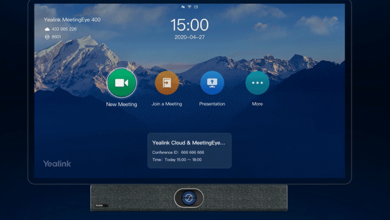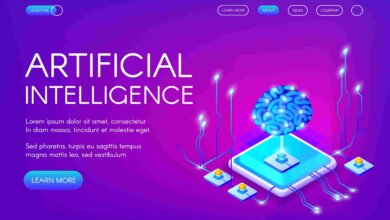Why Healthcare Enterprises Are Hiring AI Agent Development Companies for Agentic Systems
Introduction
Healthcare organizations are increasingly adopting intelligent systems to improve patient outcomes, operational efficiency, and clinical decision-making. Central to this trend are agentic systems capable of autonomous perception, reasoning, and action. That’s why healthcare enterprises are turning to specialized AI agent development companies to build and deploy these solutions. In parallel, Agentic AI in healthcare is no longer futuristic—it is rapidly becoming essential to delivering proactive and scalable care.
This article explores why enterprise healthcare providers are partnering with expert development firms for agentic solutions. We will examine key motivations, core capabilities, implementation strategies, and measurable outcomes from successful deployments.
1. From Passive Tools to Autonomous Agents
Traditional analytics platforms depend on humans to interpret data and take action. In contrast, agentic systems monitor, detect issues, and initiate workflows automatically.
By shifting to autonomous agents, healthcare systems can:
-
Provide immediate action based on predictive alerts
-
Reduce manual intervention in routine tasks
-
Enable faster response times to critical events
The decision to hire an AI agent development company ensures enterprise-grade engineering, security, and domain expertise required for real-world deployment.
2. Essential Capabilities Delivered by Development Firms
Healthcare enterprises expect the following capabilities when working with agent specialist firms:
2.1 Clinical Data Integration
Agents ingest data from EHR systems, lab results, vital signs, and device feeds to form comprehensive patient profiles.
2.2 Predictive Reasoning Engines
Development partners design models that forecast complications such as sepsis, admission risk, or post-operative infections.
2.3 Automated Task Execution
Agents order diagnostics, route alerts, schedule follow-ups, and document actions in digital systems.
2.4 Trust and Explainability
To satisfy regulatory requirements and clinician confidence, agentic systems include explainability interfaces that show why actions were taken.
These advanced features exemplify how Agentic AI in healthcare operates at scale and within complex medical environments.
3. Motivations Behind Outsourcing to Specialists
3.1 Domain-Specific Expertise
Healthcare enterprises prefer partners with experience in clinical workflows, compliance, and patient safety protocols.
3.2 Security and Compliance
Leading development companies incorporate encrypted data streams, audit trails, HIPAA, and GDPR compliance from day one.
3.3 Scalable and Modular Architecture
Experts build microservices-based agents with zero downtime, load balancing, and containerized deployment suited for enterprise settings.
3.4 Rapid Time to Value
Specialist firms accelerate pilot deployments, reducing time from ideation to benefit realization.
4. Real-World Examples of Agentic Implementations
4.1 Automated ICU Alert Systems
Agentic systems deployed in critical care units analyze real-time patient vitals and lab results to predict emergencies. When detection thresholds are met, the agent places orders and notifies care teams instantly. Enterprises report a significant reduction in code blue events and faster intervention pathways.
4.2 Radiology Triage Agents
In high-volume imaging centers, agentic solutions evaluate scans for critical findings and automatically assign priority review slots. Radiologists receive structured alerts, helping them focus on high-risk cases.
4.3 Remote Patient Management Systems
Healthcare networks are launching virtual care agents that engage patients post-discharge. These agents monitor vitals, check medication adherence, and schedule telehealth follow-ups when risk patterns emerge.
5. Steps to Deploy Agentic Systems Successfully
5.1 Start with High-Impact Use Cases
Choose domains close to clinical impact—such as ICU monitoring or post-surgical care—to maximize ROI and adoption.
5.2 Define Metrics and Governance Requirements
Measure success using response time, incident reduction, clinician adoption, and cost savings. Establish oversight mechanisms for agent actions.
5.3 Collaborate Across Teams
Ensure representatives from IT, clinical operations, legal, and data science are involved in agent design and testing stages.
5.4 Pilot, Refine, Deploy
Conduct small-scale pilots, collect user feedback, and iterate on thresholds and workflows before broader rollout.
6. Measuring Impact and ROI
Key enterprise-level KPIs include:
-
Response-time savings, measured in minutes per event
-
Reduction in adverse events or readmissions
-
Clinician adoption and agreement rates with agent recommendations
-
Cost avoidance from reduced labor, complications, or delayed diagnoses
When deployed effectively, projects return value within 12–18 months.
7. Custom Visual Concepts
-
Agent Deployment Flowchart
Visual illustrating steps: Data ingestion → predictive analysis → automated action → clinician confirmation and feedback loops -
Comparative Dashboard
Side-by-side layout showing conventional alerts versus agentic system output, including predictive insight banners and task automation indicators
Key Takeaways
-
Healthcare enterprises are choosing expert AI agent development company to build secure, scalable, and high-performing agentic systems
-
Agentic AI functions include real-time monitoring, predictive reasoning, task automation, and explainability
-
Outsourcing enables rapid deployment, domain validation, and architectural rigor
-
Common use cases are ICU alerting, radiology triage, and remote patient management
-
Successful implementation relies on pilot programs, clinician collaboration, meticulous metric tracking, and governance frameworks
-
ROI is evident in reduced incidents, faster response times, lower readmissions, and labor savings
FAQs
1. What is the difference between an AI agent development company and a traditional AI vendor?
An AI agent company builds autonomous systems that act on decisions, while traditional vendors often focus on analytics or insights without task automation.
2. Are agentic AI systems safe for clinical use?
Yes, when built by specialist companies with secure architecture, clinician override options, and explainability interfaces.
3. How long does it take to implement an agentic healthcare system?
Pilot systems typically take 4–6 months, with full-scale implementation achievable in 12–18 months.
4. What budgets should enterprises expect?
Pilot budgets often start at $250K, scaling to $1–3M for broader enterprise rollouts depending on complexity.
5. How do healthcare enterprises ensure clinician trust in agentic systems?
Trust is built through transparent design, explainability features, clinician feedback loops, and visible governance measures.
Conclusion
Healthcare organizations are increasingly investing in AI agent development companies to deploy advanced Agentic AI in healthcare systems. These intelligent agents are not only improving operational efficiency but also saving lives through proactive intervention. With the right technical partner, CTOs can confidently usher in an era of autonomous care that scales, complies, and delivers measurable results.
If you’d like help assessing or selecting the right development partner for your agentic healthcare initiatives, we’re here to support your vision and execution.




